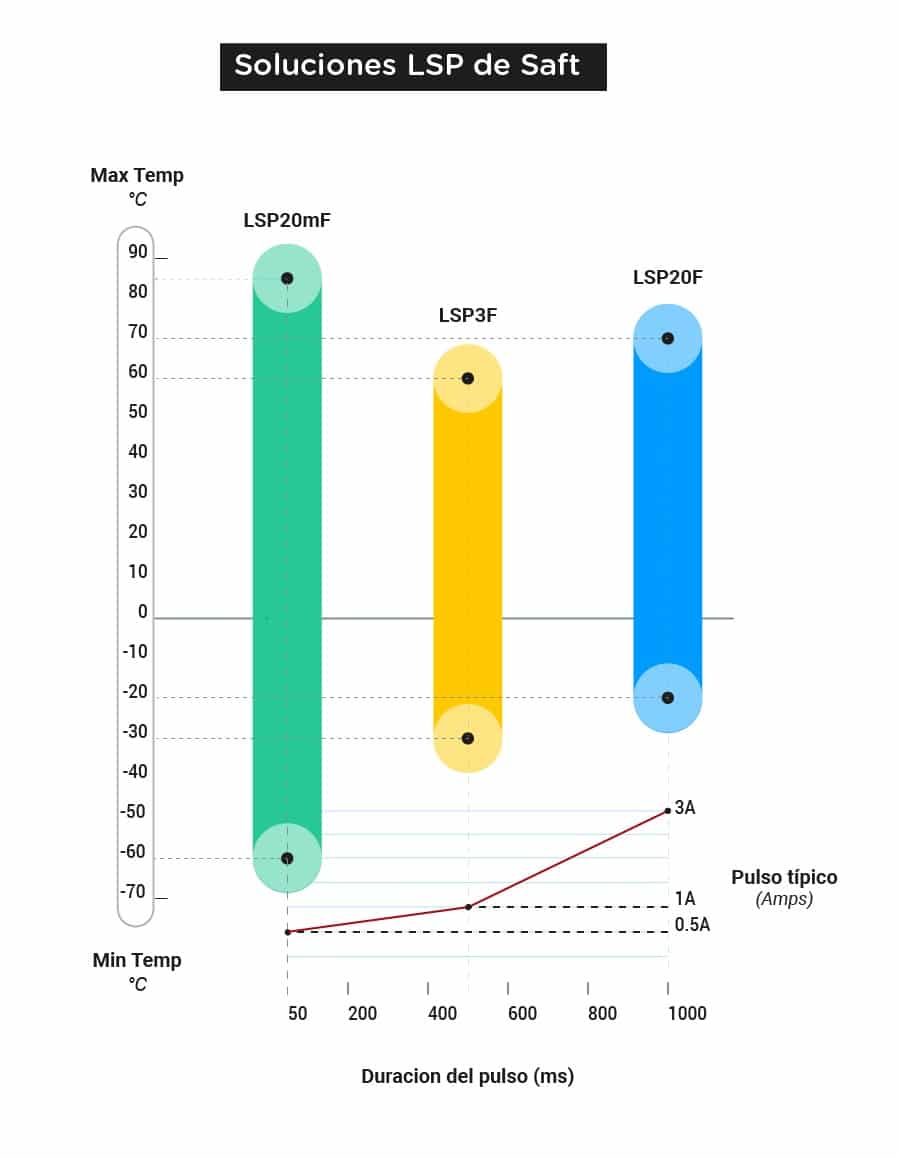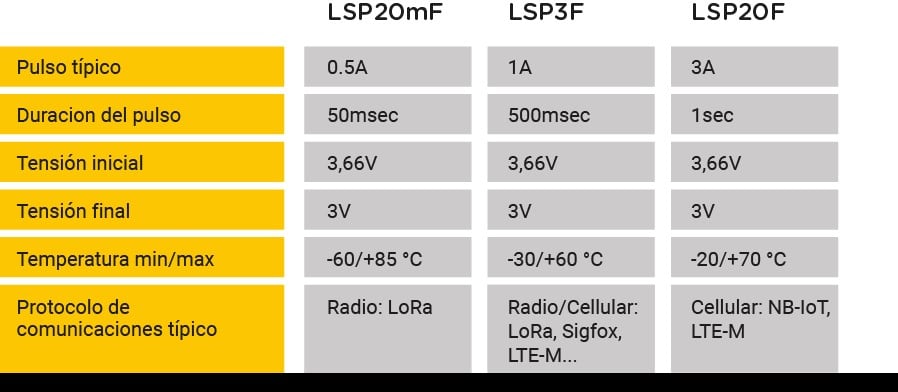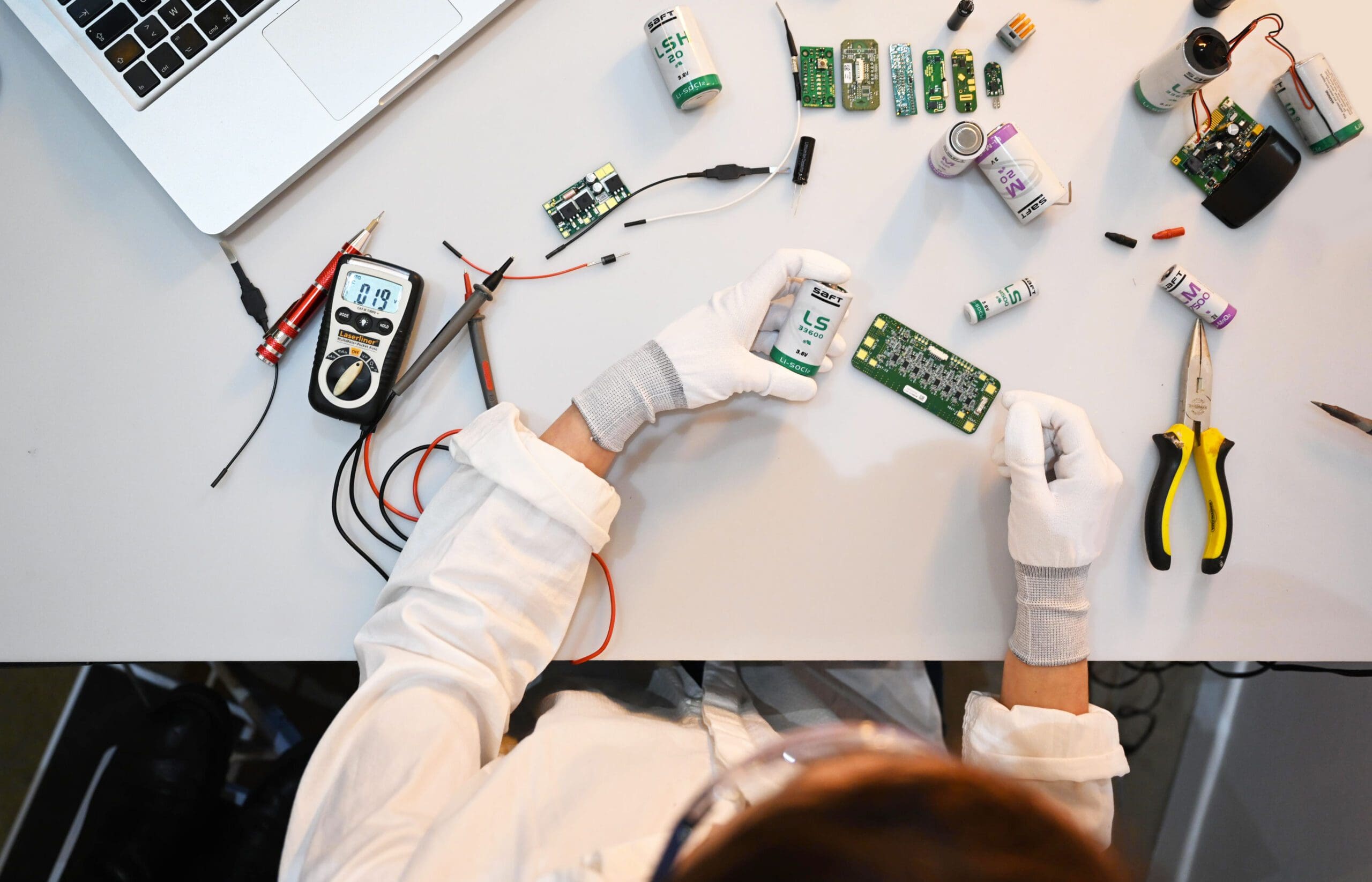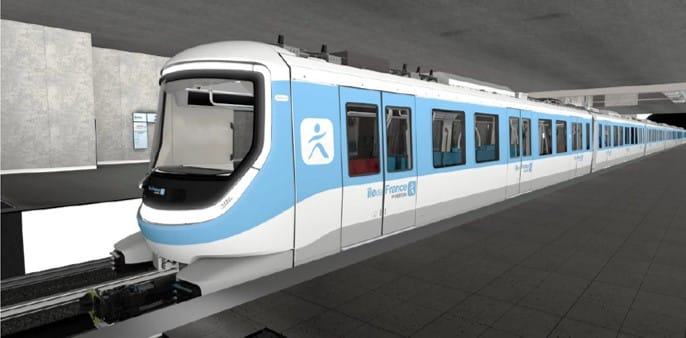By Romain Cayzac, technical director of the CE division in Poitiers
Capacitors store and release charges to counter unexpected power spikes. In combination with lithium batteries, the condenser It acts as a pulse support to quickly provide the high power required in IoT devices. Saft currently has a wide range of capacitor solutions in the LSP range: which hybrid battery solution (primary battery + pulse support) should you choose to successfully complete your IoT project?
In April 2020, we launched a new range of products, the LSP20F range, which meets the needs of a new generation of smart devices, which demand higher capacity of power pulses, in a wider operating temperature range and long lifespan.
Our LSP range combines reliable Li-SOCl cell technology2 of low discharge and of the latest generation, in addition to a careful selection of LiC (Li-ion capacitor), which acts as a pulse support. Since then, we have enhanced the range with different capacitors, allowing us to respond to most of our customers' needs and telecommunication protocol specifications.
We have asked Romain Cayzac, Technical Director of the CE division in Poitiers, our R&D department, to explain the various options and capacitors available in our LSP range to help IoT developers.
Why did we create the LSP range?
“Saft is producing the LS range based on the chemistry of lithium-thionyl chloride (Li-SOCl2), which is characterized by its high voltage and high energy density. Their coil construction makes these cells particularly suitable for applications that require very low, continuous, or moderate pulse currents, such as metering devices. With a very low self-discharge coefficient, the LS range has been designed to offer a long service life (five to +20 years) in applications with low µA base current and periodic pulses.
For higher pulse requests, we have the LSH, also based on lithium thionyl chloride, which presents a spiral construction. This design optimizes high load at the expense of capacity (typical 10 year applications). Our range, therefore, lacked a battery that could offer more than 10 years of capacity in applications that require high pulse current, and a high voltage of 3,6V.
So we created the LSP range.
What exactly is the LSP range?
The LSP range brings together our Li-SOCl cell technology2 low self-discharge, and a pulse support, which can be an electrolytic capacitor, a double-layer electrochemical capacitor, or a lithium capacitor.
Why do we need a capacitor that acts as a pulse support?
Li-SOCl cells2 they are subject to passivation, a phenomenon that causes the formation of a lithium chloride layer on the anode.
Passivation protects the cell against self-discharge, and allows for a long service life. However, the passivation layer increases the internal resistance of the cell, which can lead to low voltage readings at initial moments (range of a few ms) when connecting a load to the cell. This process is particularly common after storage at high temperatures.
Of course, our LS range can answer this, but some applications, with high current pulses and low trip voltages, frequent fluctuations in “high” temperatures (above +40°C), and for which any logging of voltage below the disconnect will activate a low battery warning signal, they are more likely to be disturbed by passivation.
To avoid this, we add an electrolytic capacitor, a supercapacitor, or a lithium capacitor in parallel to the cell. The capacitor stores energy to help increase the necessary voltage, and prevent any delay in current delivery. The amount of electric charge carried by the pulse capacitor at a given electric potential is called capacitance, and it is measured in farads (F).
What are the different capacitances available?
We have a wide range of capacitors that meet a variety of customer needs.
First we create the LSP 3F (3 farads) which has a double electrochemical layer, which need to transmit regularly at low temperature (-30°C to +60°C). But at high temperatures, the solution is limited by the leakage current of this technology (which leads to loss of capacity of a cell).
After conducting market studies, we have realized that customers needed pulse supports, with higher farad capacitance, for connected objects that require regular communication and pulses that are strong, but not too long. Therefore, we create the LSP 20F (20 farads), using a Li-ion capacitor, a solution that offers better stability at medium temperature (-20°C +70°C). We've tested it against the competition, speeding up battery pulse tests, and our solution offers better performance in terms of pulse capability, operating temperature range, and performance stability over its lifetime. Additionally, self-discharge and equivalent series resistance (ESR) are lower.
Some customers also need a solution for applications with fewer pulses, at temperatures ranging from -60°C to +85°C. You don't want to hurt your battery capacity with a bigger capacitor. So we created the LSP 20mF, using a 20 millifarad (20mF) electrolytic capacitor. The LSP 20mF is especially useful for applications implemented at high temperatures. It is also cheaper, and offers excellent value for money. Saft is today the only manufacturer to offer an electrolytic capacitor battery solution..
These 3 identified products, available in different cell sizes from AA to D, have since been developed with various capacitor combinations, ranging from a few microfarads (µF), to several tenths of a farad. Now we can offer stable and qualitative solutions that answer almost all the needs of our clients. Some examples of applications of the LSP range: Gas and water heat meters, indoor and outdoor IOT sensors (smart parking, smart agriculture...), asset tracking...
Saft LSP: A flexible solution that can be customized, according to your needs
And for the unexpected, we can also develop custom solutions. If needed, we can use different capacitors, we can provide a plug and play solution using a connector or solder it, we can create supports for the capacitor, mount several cells in series, or in parallel, etc.
A fully tested solution for total peace of mind
100% of our capacitors and 100% of our final LSP batteries are tested to ensure they meet our standards in terms of pulse delivery, once assembled. We only assemble the best components and perform various checks on our pulse capacitors, to ensure that they are in line with the customer's calculated lifetime. Some developers prefer to choose and assemble their own condenser, but do not perform advanced tests on it, which could lead to disappointing results in the field.
With Saft's LSP range, whatever the customer wants, however complex the battery, we have a flexible and qualitative solution to meet their needs.
If you would like more information about the LSP product range or receive personalized recommendations, please contact us at contact@saftbatteries.com, We will be happy to help you.
Characteristics of our range of LSP batteries










